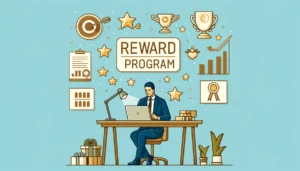HRD Roundtable Report: Flexibility, Hybrid and The New Workplace Proposition
- 9 Min Read
Flexibility has been one of the major buzzwords of the last two years, but it seems that we still have not cracked it in a sustainable way. Employees are still faced with feeling ‘always on’ and managing presenteeism and their wellbeing is suffering. Some leaders are calling for everyone to come back to the workplace, […]
- Event Types
- Date of Event: Mar 3, 2022


Flexibility has been one of the major buzzwords of the last two years, but it seems that we still have not cracked it in a sustainable way. Employees are still faced with feeling ‘always on’ and managing presenteeism and their wellbeing is suffering. Some leaders are calling for everyone to come back to the workplace, without creating tangible reasons for employees to want to. And organisations are struggling to create inclusive environments that work for both those that are remote and those that want or need to be in the workplace.
So, what does the future of flexibility really look like? What norms do we need to upturn to get there? The group in attendance were from organisations that were mostly aiming for hybrid or remote first policies but all with differing degrees of flexibility and varying business requirements.
Led by Maud Santamaria, Workplace Experience Director, Mace, and supported by further insights from Nick Hedderman, Senior Director, Modern Work Business Group, Microsoft, this discussion with senior HR leaders was conducted under Chatham House Rules. This report will contain the key discussion areas and all participants will be anonymised.
A note from Maud Santamaria, Moderator:
“It was so interesting to hear so many different industries all working towards a shared goal of making the hybrid and flexible work experience a fair experience for everyone. Clearly it is not easy, and we are all on different stages of experimentation so it was amazing to have so many examples of trial projects.
It sounded clear to me that the major push from HR and Workplace team will switch from creating policies and procedures on hybrid and flexible working, which was the main goas for the past 2 years, to now look into supporting the middle management layer to know how to lead a hybrid team.”
Flexibility in the news
There have been various high-profile individuals and organisations making strong statements about their expectations for employees to no longer work from home. One of the most recent was Elon Musk, who in a leaked email said that the expectation at Tesla would be to ‘spend a minimum of 40 hours in the office per week’ or employees could ‘pretend to work somewhere else’. Where does this point of view come from, and is it valid at all?
From a talent perspective, it is a risky position to take. People are very open about their desire for increased flexibility, and statements like this could potentially lead to a max exodus. For other organisations, this could be a boon – who might now be available to new opportunities?
These kinds of comments also reveal a particular kind of leadership style. It is a show of power to put personal preference and over both actual data, evidence and employee expectations and still expect loyalty. There is also a question around what is meant by ’40 hours’ – this is already full time! Is the expectation then that people work more than 40 hours? This speaks to a different kind of cultural issue.
So how should we think about hybrid policy & WFH guidance?
The one element of the statement that the group felt worth considering is the truth that one size does not fit all, and that we cannot assume that every job role can be achieved at home. In an organisation like Tesla, if you are a plant manager for example, although you may have a more corporate role it is important to be accessible and visible to your teams as a vital part of the role.
Any policy needs to balance selfish vs selfless wants – what the individual wants and what the business or team needs. These decisions are about building the future of the organisation.
It is important for middle and senior leaders to be more present in the office. Leaders are more likely to live alone or have home offices, as well-established work patterns that allow them to work independently. Though flexibility is highly rated as desired, there’s risk that younger or more junior generations will feel abandoned in the workplace. Research from Microsoft suggests that ~60% of Generation Z feel rudderless at work because their leadership teams are essentially absent. They may be more likely to come in frequently – to grow their social and work networks, or because their home space is not set up properly for working, or to get guidance from their more senior peers. What experience is being created for people early in their careers? We must think about the different reasons and situations people may want to come into work.
We heard from one participant who has started bringing this home via storytelling for their leaders. They are being encouraged to think about that early career experience – what relationship did they need and want with their managers and mentors? What would it have been like without those connections?
Another participant shared how they are trying to home in on the specific moments that are being affected negatively by hybrid working. Rather than create any kind of blanket policy, they hope to be better able to communicate why these moments are important to be physically present for. They have found for example that on-boarding is taking much longer than before, so are now working to create guidelines to improve this part of the employee journey.
Microsoft has created team agreements or ‘charters’ – each team leader was tasked with setting out what they felt the policy should look like for their team initially, then gathering feedback and other ideas. The final version is then agreed upon by everyone in the team – because they contributed to the process, the commitment is stronger.
These policies are still in the experimental phase for most organisations, and it is important to create room for feedback, and failure.
Avoiding two-tier workplaces
Mixed workforces (i.e., those with office based and frontline roles) have complex considerations when it comes to offering more flexible options. For example, how would a 4-day week be implemented while ensuring service coverage?
On the other hand, are we focusing on the wrong kind of ‘parity’? Most people understand the limits of their roles when they sign up – someone working in a retail store realistically probably is not expecting to be able to work from home. So how can we be more creative about flexibility and parity in other kinds of ways? Perhaps offering different shift schedules? Working across more than one location to offer different experiences? Or longer shifts, but across fewer days?
People working together in closer quarters may feel more connected to each other than the corporate office, for obvious reasons! Rather than being part of their day-to-day experience, managers can be seen as overly corporate or absent from on the groundwork. There is also often less spend on their experience, including the technology to help keep them feeling connected. Investing and building this connection is vital to improving the feeling of being equally valued across the organisation.
How do we create the pull?
The ‘pull’ to return to the office needs to happen across all parts of the experience – reimagining the purpose as well as the physical space.
Organisations are experimenting with the physical space. We heard from one people leader who is working closely with their estates team to create ‘neighbourhoods.’ Which teams need dedicated spaces and kit? Which teams frequently collaborate and so would benefit from being near each other? Other organisations have taken the approach of redesigning the workspace to be oriented around collaboration – more about meeting rooms and hot desks than individual workspaces.
Connecting purpose to the workspace, both on an individual and organisational level will be key. Why do we want you to come in and why do you want to come in? What kind of work is best completed in the office vs at home? We heard from one participant who is building a ‘3-way handshake’ – what the business needs, what you need and what leadership should deliver to you. this ties into their values of respect, trust, and accountability, not just individuality. Another organisation is using the 3 ideas of ‘connect, collaborate, congratulate’ as reasons to come together.
Where are the challenges in this approach? Firstly, as with many engagement issues, the least engaged colleagues are often the ones that we do not hear much from. We need to better understand why they would prefer to be at home and what they would consider a good reason to come in. There is already technology out there designed to help identify gaps in outputs and lost connections (Microsoft Viva for example), and some organisations are now building dashboards to track this kind of engagement and productivity. We need to take a wider view on how different working patterns affect connection – absence, sickness, attrition, and customer feedback.
There is also a lot of pressure on managers here. As leaders of the team, they are responsible for making time spent together actually collaborative, purposeful (whether work or fun) and appealing. On top of regular duties, they are now workshop facilitators and event planners. The group discussed how people leaders can help support managers with reasons to come together. For example, ‘speed dating’ networking events, quarterly social get togethers, or implementing technology like Yammer, to encourage people to coordinate when they will be in the office next.
What is next
There was a significant amount of ground to cover in this conversation, and a lot of areas we were not able to touch upon or go into enough depth. What is clear though is that the conversation around hybrid and flexibility is really around the future of work and what kind of organisation you want to be, not just where your people work.
This was part of a four-part roundtable series will bring together senior HR leaders to discuss the most pertinent issues currently facing the HR function, identify opportunities and allow you to learn from the experience of your peers.
Follow up resources
Work Trend Index: Microsoft’s latest research on the ways we work. (Reports homepage)
WorkLab: Vital facts about the future of work
Technology Can Help Unlock a New Future for Frontline Workers
Employee Experience and Engagement | Microsoft Viva








